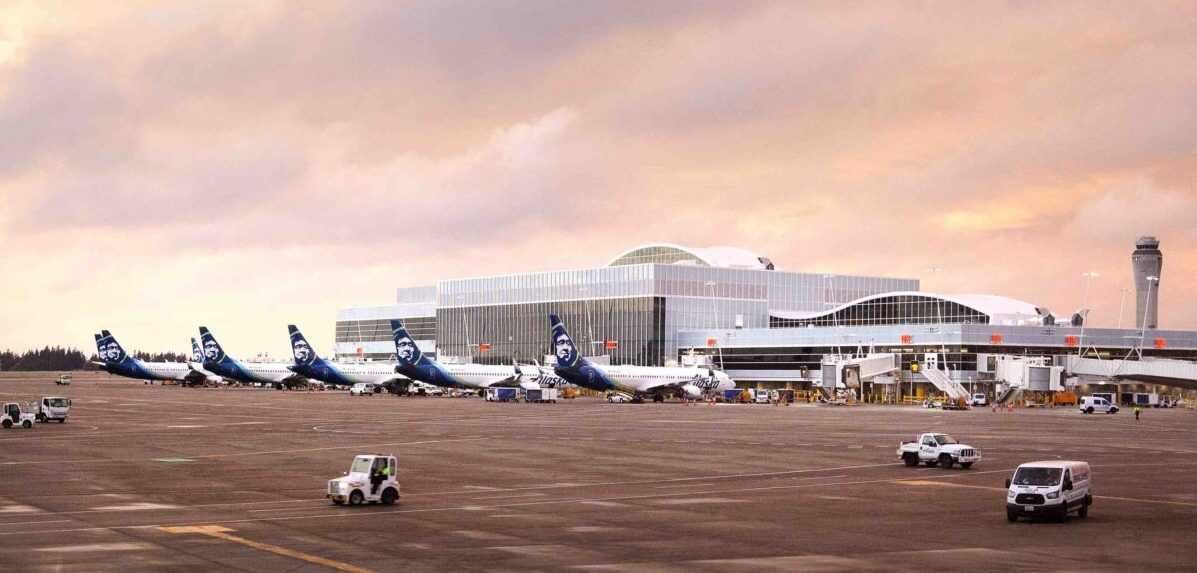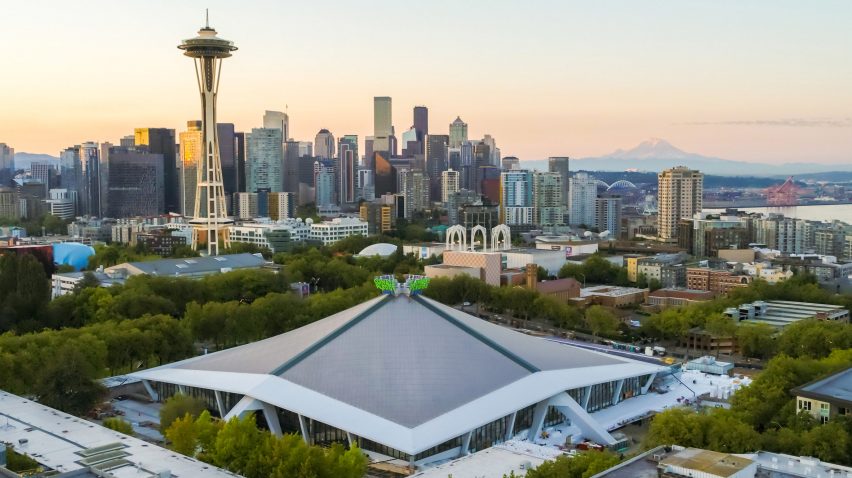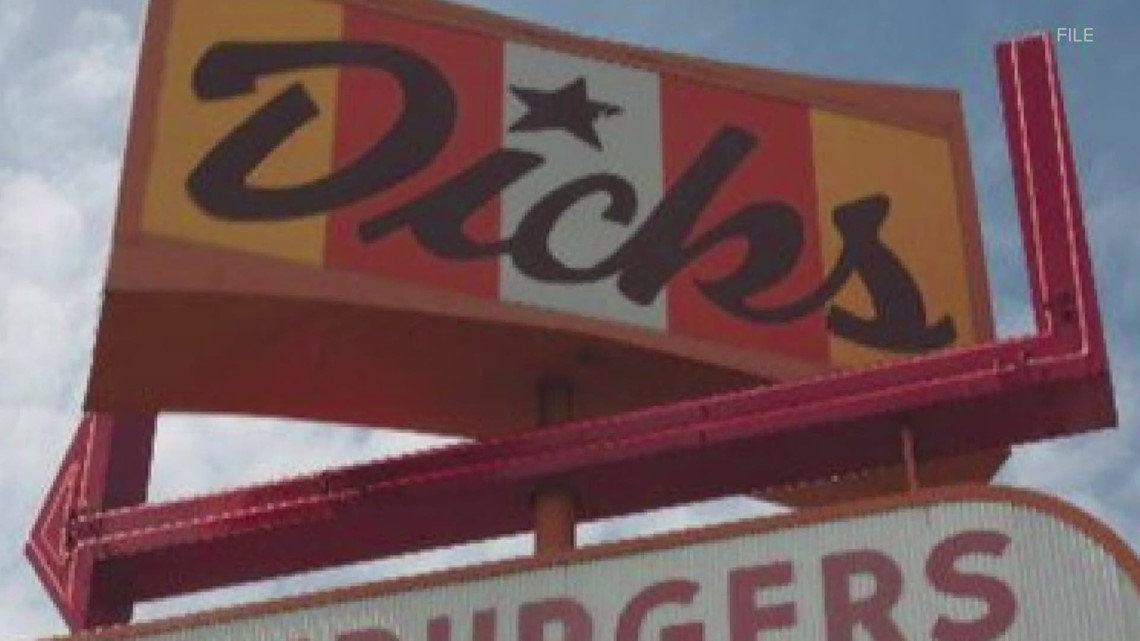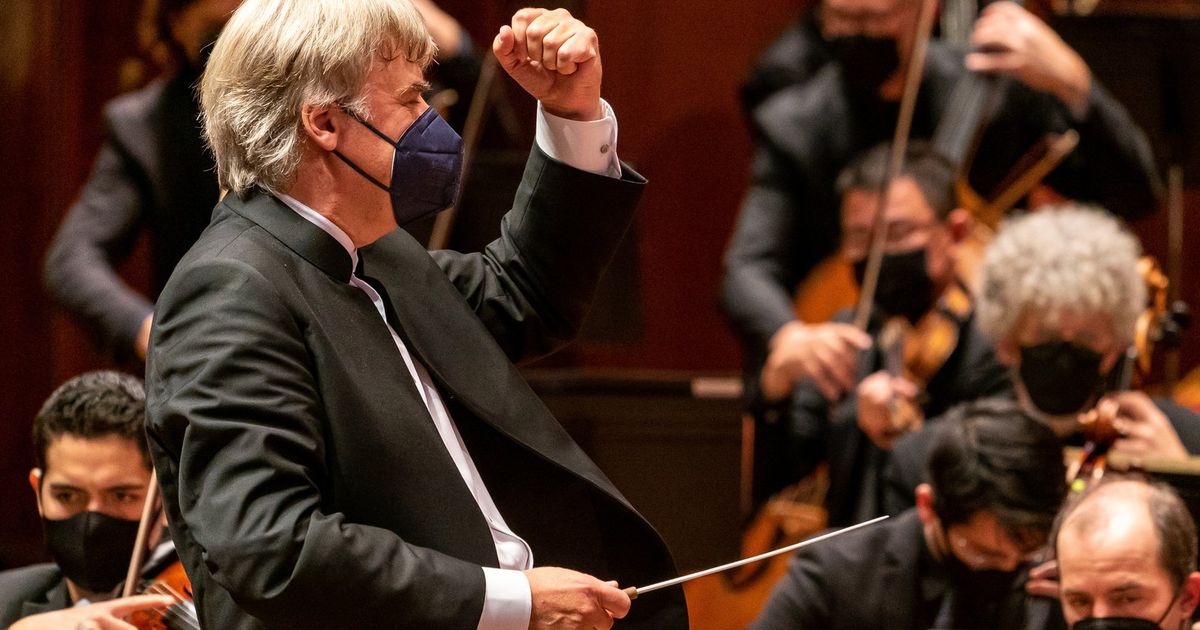Yamasaki envisioned redesigning the surrounding lots in the UW wing, including the Olympic Hotel, 5th Avenue Theater, the Skinner and Cobb buildings. He found zero merit in the existing structures. As he put it, “The White Henry Stuart Building and Olympia Hotel Block in no way enhance the experience that should be fundamental to the human being during their time in the city.”
The project went ahead. But conservationists moved to prevent its expansion. The Landmarks Board began with a detailed examination of listed structures and examined the protection of endangered buildings on the UW tract. Extensive redevelopment did not take place, although the mall portion of the Rainier complex was eventually demolished and a new high-rise built next to it, taking care not to block the drama of Yamasaki’s tower on its pole.
Architectural “fragility”
The fact that Yamasaki’s Seattle projects became the subject of national debates testifies to the importance of his work, but also underlines the multifaceted idea of the author Kidder, which he calls architectural “fragility”.
One aspect of this is the architect’s reputation. Yamasaki, who trained in Seattle, left and built his career in the East after facing racism and discrimination here. His “return” to the city was seen by some as an opportunity for reconciliation and to rejuvenate his local ties. For example, in 1960 he received the UW’s “Most Distinguished Alumni” award for his national and international work. His profile as a local boy who did good was raised.
But in the 1970s, as the Rainier Tower project showed, the architect, who advocated beauty and nobility in design, was attacked as the destroyer of his hometown. It was Yamasaki’s last job in Seattle. He was celebrated in the 1960s, rejected in the 1970s, and died of cancer in the mid-1980s.
The 2001 attack on the World Trade Center put it back on the map for a brief period as people wanted to learn more about the history of the Twin Towers, how they were built, and why they collapsed so drastically. If anything, they became symbols of tragedy, but also of hubris.
Buildings themselves can be fragile and destructible. The Rainier Square shopping mall in Yamasaki has disappeared. Yamasaki himself was not at all attached to “old Seattle” – if anything, he was probably a bit hostile to it because of his past here. For Steinbruek, Bassetti, and others, the historic buildings erected to erect Yamasaki’s monument also demonstrated the fragility of the past and the complex urban environment they sought to cultivate with the mix of new and old.
The strength of architecture does not lie in foundations, steel, concrete or design, but in the meaning that a building embodies. Despite all the rules and guidelines that try to make monument preservation a kind of science, the most compelling aspects of monument preservation combine with the stories these structures tell. What does it mean for us? How does it feel with us? We may love towering towers, but also low bungalows.
Fragility also comes with the changing dynamics of human circumstances. The decline in church attendance has left many local churches facing closure or demolition. The Catholic Archdiocese has put a number of churches in Seattle and Tacoma on the table. And the pandemic tests the resilience of iconic historical landmarks like the Pike Place Market and the Space Needle, both of which were affected by the disappearance of tourists and cruise lines during the pandemic.
Entire categories of buildings, such as our country’s historic theaters, have been closed by the pandemic. They often anchor historic retail districts and have suffered along with them from closings, sales shortages, downsizing and maintenance backlogs – enough to deserve a spot on the Washington Trust’s Most Endangered Legacy 2021 list. Fortunately, a new government funding program is in the works to help them get back on their feet. Work to “save” historical buildings or neighborhoods is ongoing; It’s a starting point, not a finish line.
Kidder also points out that Yamasaki’s work was about fragility. “Probably the most definitive feature of his style was the embrace of fragility,” he writes. “From very early on in his career, Yamasaki had an aversion to what he perceived to be brutality in architecture.” Kidd says he avoided structures designed to be defensive and intimidating: “Modernism, he thought, should be everything represent what humanity has done to move in the opposite direction. ”So architecture should be a force for civilizing society.
In today’s harsh world, in an America where Yamasaki’s work has been destroyed by terrorists and where democratic institutions are under attack and authoritarianism is on the rise, we can now see the fragility and importance of Yamasaki’s pursuit of an architecture of beauty, serenity and finishing. Kidder argues that re-examining Yamasaki’s work can bring us back in touch with the value of architecture that embodies “civilization, humanism, democracy.” It’s not just architecture and reputation that are fragile. We live in destructive times when his ideals must be reabsorbed, both philosophically and physically.







:quality(70)/cloudfront-us-east-1.images.arcpublishing.com/cmg/BPEI2QQ76SHPPOW6X6A6WHEGX4.jpg)
















:quality(70)/cloudfront-us-east-1.images.arcpublishing.com/cmg/GLQND2AXQQO2G4O6Q7SICYRJ4A.jpg)




